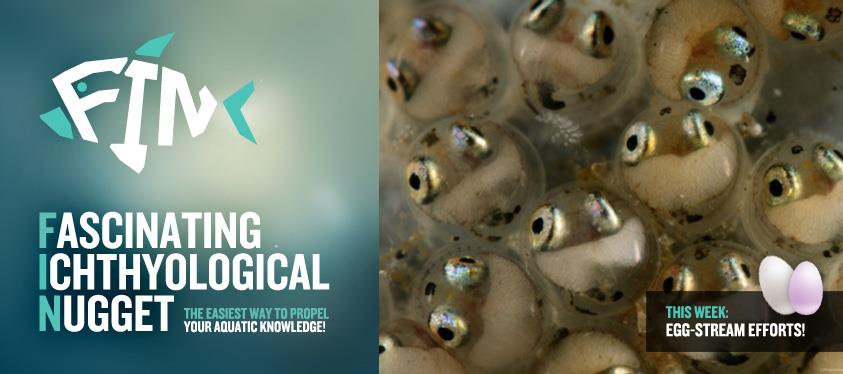Cookie Policy
We use cookies to help improve the experience you have on this site. You can find out more here.
We use cookies to help improve the experience you have on this site. You can find out more here.


If you’re hunting Easter eggs this weekend, think yourself lucky that it’s the Easter Bunny and not the Easter Cod who's hiding them. A 34kg female was recently found to contain over 9 million eggs, which would certainly take some serious hunting time!
The most common reproductive strategy for fish is known as oviparity, in which the female lays undeveloped eggs that are externally fertilised bya male. When the fry hatch from the egg, they often carry the remains of the yolk in a yolk sac which continues to nourish them for a few days as they learn how to swim. Once the yolk is consumed, there is a critical point after which they must learn how to hunt and feed, otheriwse they will sadly perish.
Fish have a very varied approach to their eggs with numbers laid tending to reflect the size of their investment. The worst parents seem to lay the most eggs, and those species that scatter their offspring to their fate play a numbers game and broadcast huge spawns in the knowledge that many of their eggs and fry will be eaten by predators.
If you're a tiny fish in a world of predators then sometimes it makes sense to put all of your eggs in a different basket. The Splash Tetra (Copella arnoldi) of the Amazon has a novel and energetic way of protecting its eggs. A male will select an overhanging leaf and display to suitable females. If his charms win her over, the two fish will leap from the water and spawn on the leaf before falling back into the water again. The dutiful male then remains with the egg clutch and uses his tail to regularly splash water on the eggs to keep them hydrated. When the eggs hatch, the fry drop into the water having spent their most vulnerable stage in a far safer environment.
Similarly, fishes that show great parental care for their young, lay fewer eggs but typically these are larger in size. At the other end of the scale to the cod, the Tropheus species of Lake Tanganyika may have a clutch of only 20 eggs and these are cared for by their mother, who carries them in her mouth until the young fishes are ready to start life on their own!
And finally, oviparous shark species (those that lay eggs, with little or no other embryonic development within the mother) produce a leather like egg case that protects the developing embryo(s). These cases may posses corkscrewed tendrils that help lodge the egg into crevices for further protection. Once empty, the egg case is known as a mermaid's purse and can often be found washed up on the shore. Examples of oviparous sharks species include the Horn Shark, Cat Shark, Port Jackson Shark and Swell Shark.
For delivery before Christmas, orders must be placed on or before 3pm on Wednesday 20th December. We cannot guarantee delivery of these orders pre-Christmas as we are reliant on our couriers, but will use our best endeavours to get orders placed on this date out to you before Christmas. For full details of our festive delivery and opening times click here
Please note: online orders placed after 3pm on Friday 22nd December will not be dispatched until the New Year. For full details of our festive delivery and opening times click here